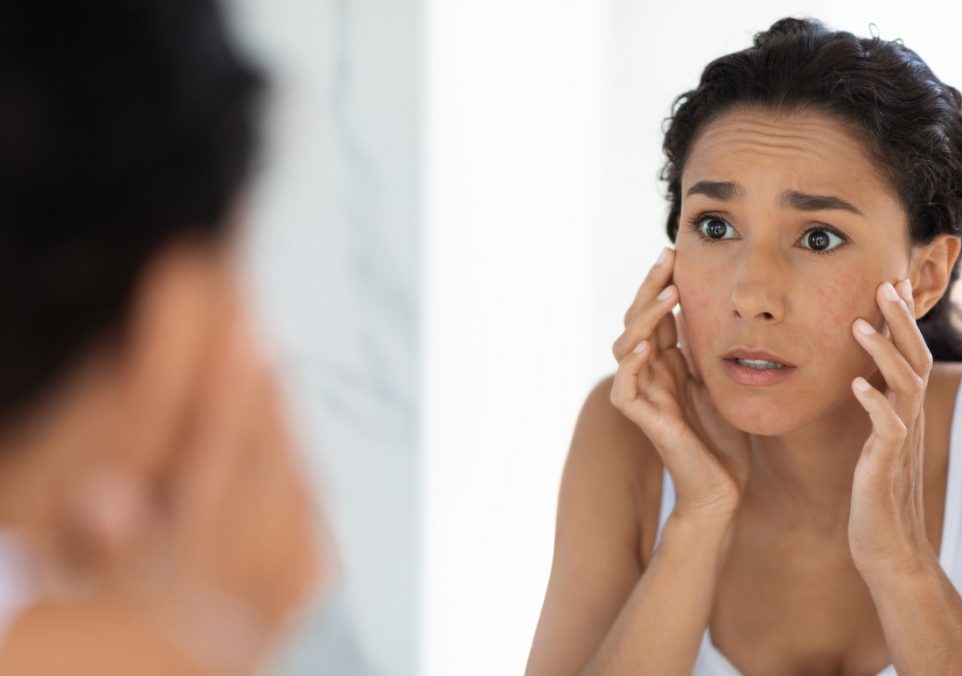Acne vs. Pimples: The Difference and How to Treat Each

Addressing skin blemishes is a prevalent concern, with the terms “acne” and “pimples” often used interchangeably. Nevertheless, these two skin conditions, while both leading to unwanted spots, have notable disparities in their causes, severity, and treatment approaches. In this blog, we aim to clarify the distinctions between acne and pimples, enabling you to differentiate between them effectively.
Furthermore, we’ll provide you with valuable insights into the causes and triggers of each condition and offer strategies for their respective treatments. By understanding these differences, you’ll be better equipped to address and manage skin blemishes, ensuring the most suitable care for your specific condition.
Understanding Acne
Acne is a comprehensive and persistent skin condition characterized by the emergence of various types of blemishes on the skin. These include:
- Whiteheads: closed clogged pores with a white or flesh-colored bump;
- Blackheads: open clogged pores with a darkened, oxidized surface
- Papules: small raised red bumps without a visible center
- Pustules: red bumps with a white or yellow pus-filled center
- Nodules: large, painful, solid lumps beneath the skin’s surface
- Cysts: painful, pus-filled lumps deep beneath the skin that can potentially lead to scarring
Understanding these distinct forms of acne is crucial in addressing the condition effectively.
What Causes Acne?
Acne’s development is influenced by various factors, including excess sebum production, which can clog pores and initiate acne formation. The presence of Propionibacterium acnes (P. acnes) bacteria within these clogged pores further exacerbates inflammation and the severity of acne.
Hormonal changes play a significant role in causing acne, particularly during phases like puberty, menstruation, or pregnancy. Genetics also contribute to a person’s susceptibility. Understanding these driving factors helps in comprehending the causes of acne and tailoring effective treatment strategies.
Treating Acne
The treatment of acne typically involves a multi-faceted approach and incorporating various strategies. Topical treatments, available over-the-counter or via prescription, contain ingredients such as benzoyl peroxide, salicylic acid, or retinoids to help unclog pores and reduce inflammation.
In hard-to-treat cases, dermatologists may prescribe oral medications like antibiotics, oral contraceptives (for hormonal acne), or oral retinoids such as isotretinoin. Adopting positive lifestyle changes, including gentle skincare, leading a healthy lifestyle, and minimizing facial contact, is essential for managing and preventing acne.
For more severe cases or to address scarring, dermatological procedures like chemical peels, microdermabrasion, or laser therapy may be recommended. This comprehensive approach to acne treatment ensures that individuals receive the most effective care for their specific condition.
Understanding Pimples
Pimples, a term often used interchangeably with acne, refer to specific types of acne lesions. They are typically characterized as small, raised red bumps known as papules, or pus-filled bumps called pustules, commonly found on the face, neck, chest, or back. Pimples fall within the scope of acne but represent a milder and more superficial form of this skin condition.
What Causes Pimples?
Pimples, like other acne lesions, develop as a consequence of clogged hair follicles, a process influenced by several factors. Excess oil production, or sebum, can lead to the blockage of pores, a common trigger for pimple formation.
The accumulation of dead skin cells can exacerbate this issue, as these cells can mix with the excess oil, creating a plug within the hair follicle. Furthermore, the presence and activity of P. acnes bacteria within the clogged follicle can contribute to inflammation and the formation of pus within pimples.
Treating Pimples
Treating pimples is typically simpler compared to addressing more severe forms of acne. Several effective approaches can be adopted to manage and alleviate them.
Over-the-counter spot treatments containing ingredients like benzoyl peroxide or salicylic acid can help reduce inflammation and expedite the healing process. Using pimple patches has the same effect.
Applying a warm compress to the affected area can soothe it and encourage the pimple to come to a head, facilitating resolution. It’s essential to resist the urge to squeeze or pop pimples, as this can lead to infection and scarring.
Maintaining good hygiene by gently cleansing the affected area twice daily with a mild cleanser is also crucial. To prevent further pore clogging, opt for non-comedogenic skincare and makeup products. These strategies offer effective means of managing and preventing the occurrence of pimples.
Conclusion
While both acne and pimples can be bothersome, understanding the differences between them is essential for effective treatment. Acne encompasses a broader range of blemishes, including severe forms like nodules and cysts, and often requires more extensive treatment.
Pimples, on the other hand, are a milder form of acne and can often be managed with simpler topical treatments. Regardless of the type of blemish, maintaining good skincare practices and seeking professional guidance when needed can help you achieve clearer and healthier skin.
Building a Stronger You
Supplement Institute is the fruit of extensive online publishing experience, spanning the breadth of SEO strategies to the nuances of paid advertisements. Our journey, marked by significant achievements and learning moments, inspires our core mission: to empower our readers with an abundance of information. By sharing insights and key learnings, we aim to provide you with the knowledge needed to navigate the complex world of supplements, helping you make well-informed decisions for your health and well-being. Welcome to Supplement Institute, where information is your greatest supplement.